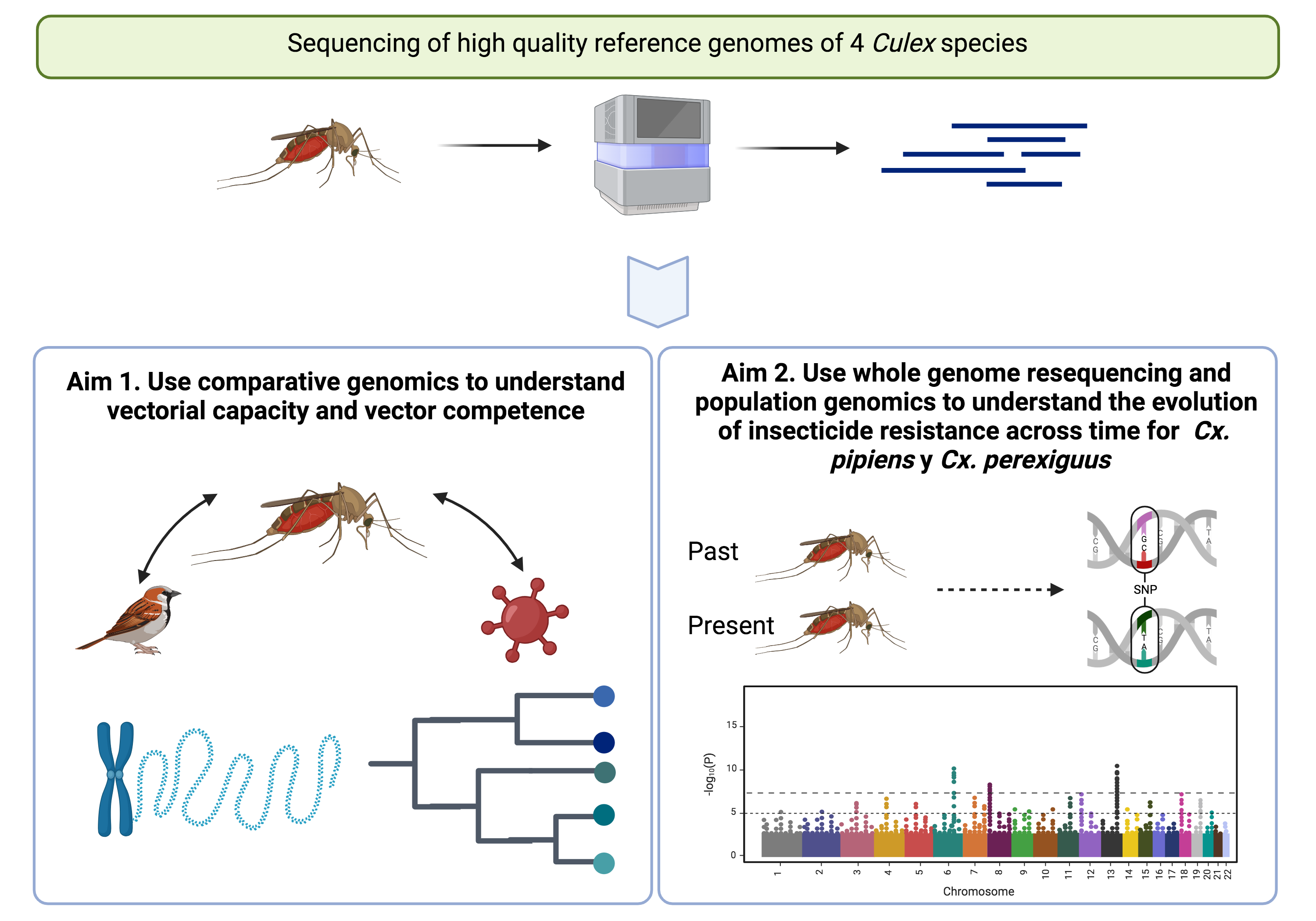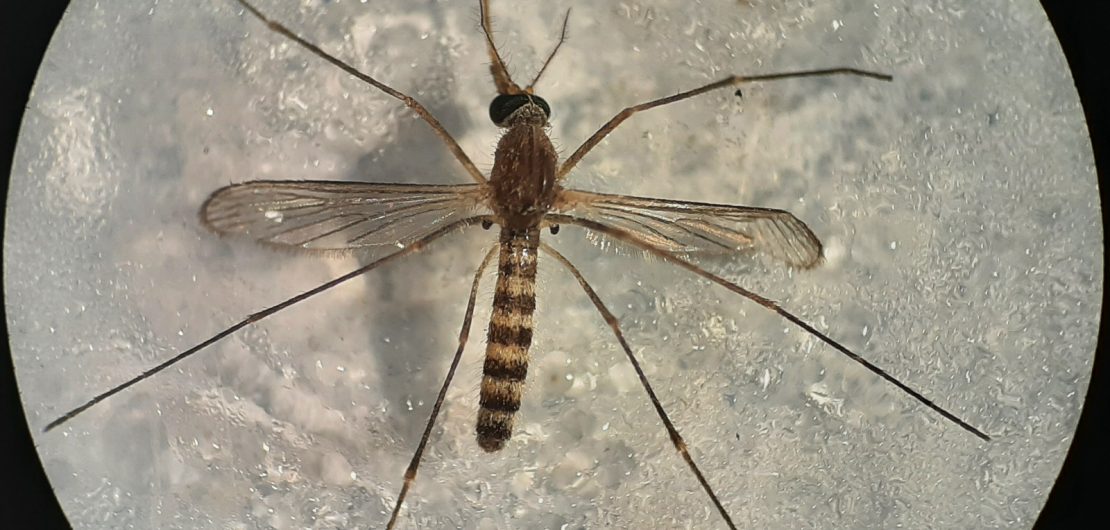Analysing the genomic basis of vectorial capacity and insecticide resistance in Culex species using reference genomes and population genomics.
María José Ruiz López (Estación Biológica de Doñana-CSIC, Seville, Spain); Jordi Figuerola (Estación Biológica de Doñana-CSIC, Seville, Spain); Josué Martínez de la Puente (Estación Biológica de Doñana-CSIC, Seville, Spain); Iker Irisarri (Leibniz Institute for the Analysis of Biodiversity Change, Leibniz, Germany)
(All photos by Santiago Ruiz, Juana Moreno y Alvaro Solis. Mosquito Control Service. Huelva Provincial Council and research team from the Doñana Biological Station. CSIC and the Center for Networked Biomedical Research in Epidemiology and Public Health (CIBERESP), ISCIII.)
The overarching goal of the project is to use study the genetic basis of vector competence and insecticide resistance in several mosquito (Culex) species.
Keeping mosquitoes at bay in South Spain
Mosquitoes can transfer dangerous diseases. However, by using full genome sequencing, we can study not only how mosquitoes move through the landscape -thus getting a better understanding of how they spread disease- but also explore other subjects, such as their resistance to insecticides, which can get a better management of their population.
Key steps and goals of the study:
- Analyse the genetic basis of vector competence (ability of a vector to transmit a pathogen) and vectorial capacity using comparative genomics.
Milestone: generating high quality reference genomes for Culex modestus, Culex perexiguus, Culex laticinctus and Culex theileri. Further information about these species can be found here (https://mosquitos.ebd.csic.es).
- Sequence whole genomes (low coverage) from individuals of the vector species Culex perexiguus and Culex pipiens collected at different locations and different times to study population structure and insecticide resistance evolution.
Milestone: developing a SNP panel that will allow to compare past and present populations.
BGE genome application pillar leader Jose Melo-Ferreira provides details about the case study:





